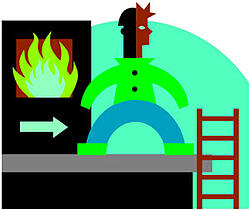
Making sure you and your family are properly prepared for a natural disaster, such as severe weather, lightening storm, flood, or a fire in your home, is a great way to assure that you’re able to “weather the storm” and safely evacuate your home. FEMA has a website designed to assist you in preparing a Family Emergency Plan: www.disasterassistance.gov, which guides you and your family to safely and quickly evacuate your home in an emergency.
The first step is to put together an escape route (www.ready.gov/make-a-plan) from your home and make sure to practice this frequently so everyone is familiar with it. Create a floor plan of your home, making sure to show escape routes from each room; and keep a copy of this floor plan in each room at your children’s eye level. If you have upper floors, make sure each room has an escape ladder and everyone knows how to use it.
The second step is to plan where you and your family will meet after evacuating your home. Part of preparing the Family Emergency Plan is to decide on a location BEFORE disaster strikes. You may want to discuss having an alternate meeting location if the first location is not available.
The third step is: PRACTICE MAKES PERFECT. Practicing your escape plan is vital to making sure that everyone does indeed get out of the home safely and quickly. It’s recommended that you should practice once per month so everyone is familiar with the plan and knows exactly what they need to do and how to do it.
The fourth step in to prepare an Emergency Kit of supplies and decide where you’re going to keep it. Having more than one kit and keeping them in different locations will also help if you’re unable to reach one of them. You’ll also need to decide what to put in your Emergency Kits. You’ll want to anticipate what you may need for different situations and pack the kit accordingly. In addition to the more common items, such as flashlights, food, water, blankets, clothing, games/books, you may want to consider the following items to add in case of a longer stay away from your home:
- Moist towelettes
- garbage bags
- can openers for canned foods
- whistle to signal for help
- battery-powered radio
- tools
- prescription medications & eye wear
- infant food
- diapers
- pet food
- money
- paper plates
- napkins & silverware
- sleeping bags
- heavy coats
Preparing for emergencies and disasters BEFORE they happen will likely help your family to stay calmer during a hectic time. Just keep in mind that you MUST practice with your family once you have your Family Emergency Plan created. Disasters could happen at any time. Being prepared is the best way to ensure your family’s safety when it does.
At Wolgast Restoration, when mayhem strikes, we strike back!

